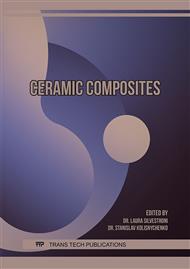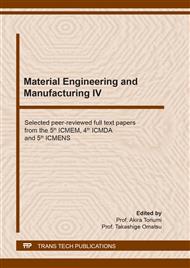p.139
p.145
p.151
p.159
p.166
p.173
p.181
p.188
p.198
Processing of Cf/SiC Composites through Two-Channel Temperature-Control CVI: I, Modeling
Abstract:
A two-channel temperature-control CVI scheme was proposed to fabricate thicker and denser composites. The two-channel structure helps to densify a thick preform, and a precise temperature control will guarantee a low and uniform porosity distribution. Validation simulations containing hydrodynamics, mass transfer, heat transfer and pore structure evolution were first carried out. Modeling results confirm that a two-step densification based on the new scheme can work well: At step I, all gases pass through the preform and the high-temperature bottom-preform is densified; At step II, by altering the outlet, temperature and infiltration time, part of gases are sucked into the preform and the remaining coarse preform is densified. The scheme can fabricate tick, uniform and dense composite, it can also avoid huge pump pressure thus protecting fibers from cracking. It is hoped to enlighten the CVI processing of ceramic matrix composites.
Info:
Periodical:
Pages:
198-206
Citation:
Online since:
September 2021
Authors:
Keywords:
Price:
Сopyright:
© 2021 Trans Tech Publications Ltd. All Rights Reserved
Share:
Citation:



